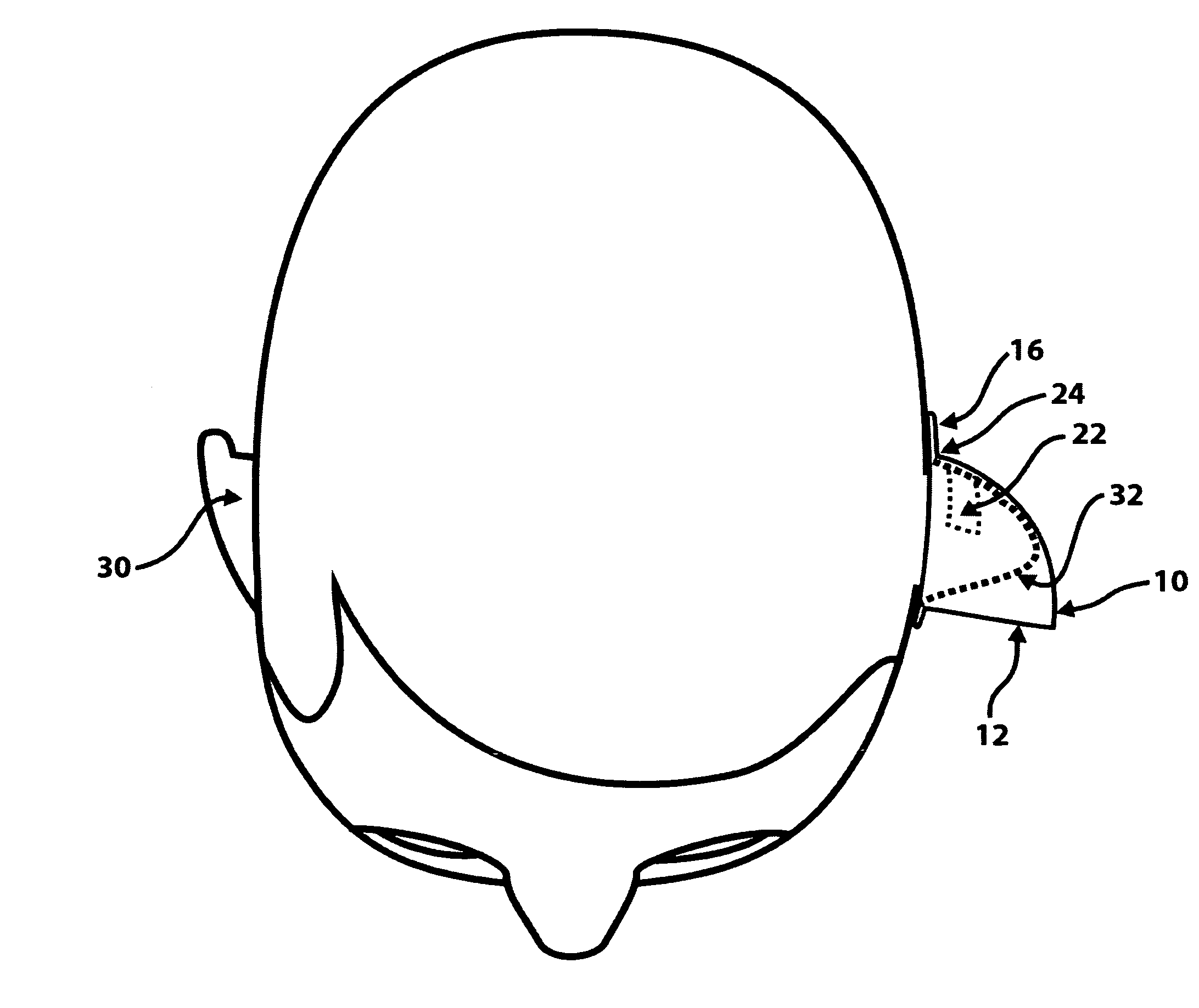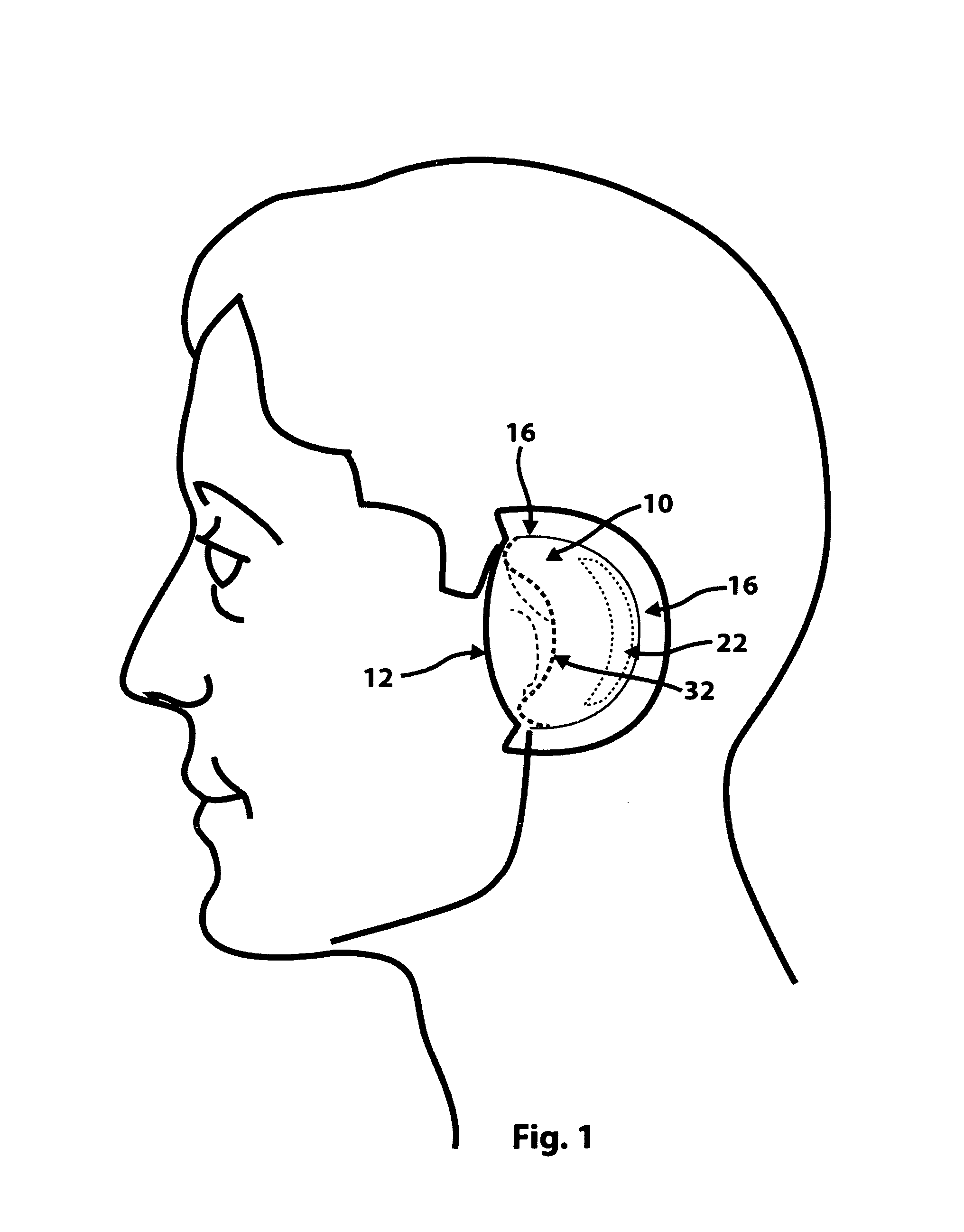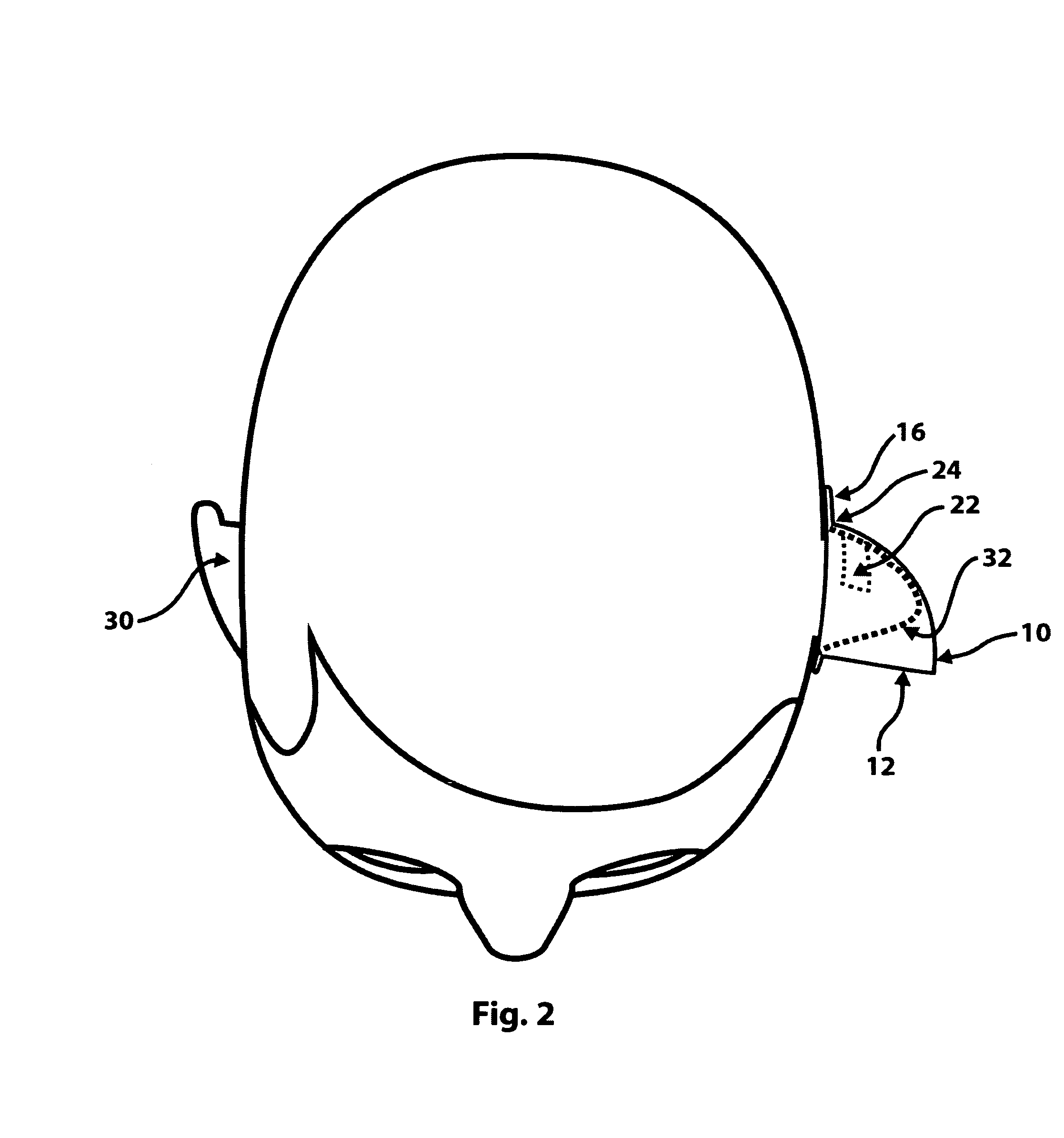Ear-mounted lenticular acoustic reflector
a technology of lenticular acoustic reflector and lenticular lens, which is applied in the field of ear-mounted reflective acoustic lens, can solve the problems of sound waves, the prior art devices that cannot overcome the problems of such devices, and the inability to provide lenticular accuracy to its reflections, so as to achieve phase-coherence and accurate sonic image relationships.
- Summary
- Abstract
- Description
- Claims
- Application Information
AI Technical Summary
Benefits of technology
Problems solved by technology
Method used
Image
Examples
Embodiment Construction
[0040]We turn now to the drawings on a descriptive basis, with similar reference characters denoting similar elements in all of the several views. FIGS. 1 through 2 illustrate an oblate spherical lune or diangle shaped paraboloid acoustic reflector 10 formed of a relatively thin plastic film as it would appear from the side and above when worn on a user's left ear, with all of the objects located inside the reflector shown with dotted outlines, and with the optional adhesive strip 22 and its protective covering strip 23 shown on the back side of the interior of the reflector 10. FIGS. 3 through 6 illustrate the acoustic reflector 10 as it would appear when not being worn by a user, shown without and with the optional interior adhesive strip 22, from both the outside facing left and from the front. FIGS. 7 through 8 illustrate a means whereby the amount of inward pressure against the top and bottom of the pinna 32 of a prospective wearer that is needed to produce the amount of outwar...
PUM
 Login to View More
Login to View More Abstract
Description
Claims
Application Information
 Login to View More
Login to View More - R&D
- Intellectual Property
- Life Sciences
- Materials
- Tech Scout
- Unparalleled Data Quality
- Higher Quality Content
- 60% Fewer Hallucinations
Browse by: Latest US Patents, China's latest patents, Technical Efficacy Thesaurus, Application Domain, Technology Topic, Popular Technical Reports.
© 2025 PatSnap. All rights reserved.Legal|Privacy policy|Modern Slavery Act Transparency Statement|Sitemap|About US| Contact US: help@patsnap.com



